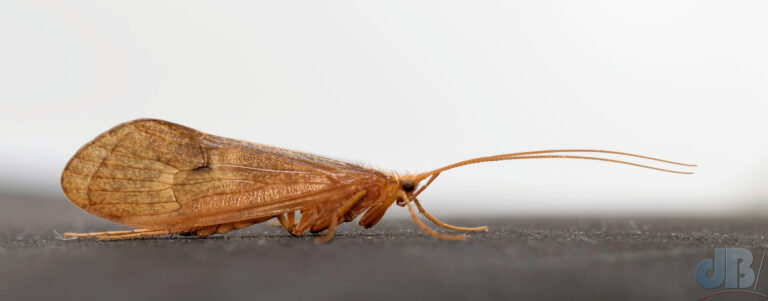TL:DR – The etymology of a caddisfly name.
While most of my invertebrate photography focuses on Lepidoptera, it’s also fun to get shots of other insects, such as this large caddisfly, Stenophylax permistus, which turned up in the moth trap overnight. I’ve seen it several times before, but hadn’t previously felt inclined to take a photo until this morning.

The scaly-winged Lepidoptera (moths and butterflies, same thing) and the hairy-winged Trichoptera (caddisflies, also known as sedge-flies or rail-flies) share a common evolutionary ancestor. The former group evolved to have scales on their wings while the latter has ostensibly smooth, albeit veined, wings, that have hairs. The two together sit within the superorder Amphiesmenoptera. There are about 14500 species of Trichoptera and 160,000 species of Lepidoptera.
This large species of caddisfly is, I believe, Stenophylax permistus. I don’t believe there’s an official vernacular, or common, name for this insect, but if we look at its scientific binomial literally, we could invent one. Steno means “narrow”, phylax means “guard” and permistus means “permitted”. So the common name for this caddisfly could be the “Permitted Narrow Guard”? Perhaps…
The caddisflies have aquatic larvae, which is handy as we have a garden pond, but the adults are terrestrial.